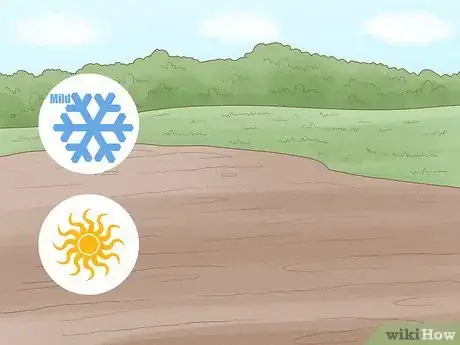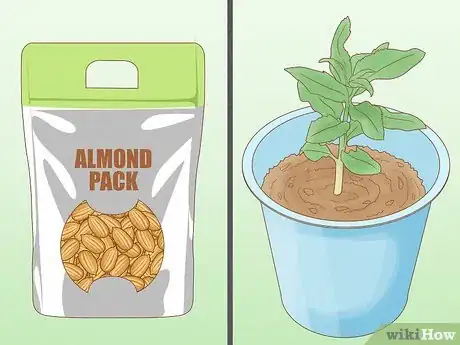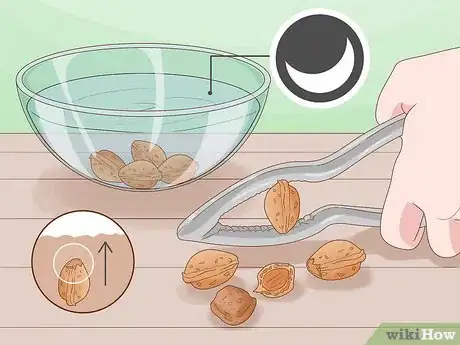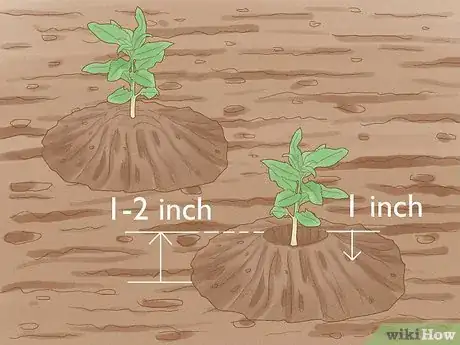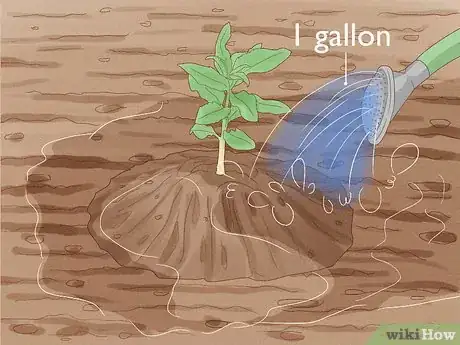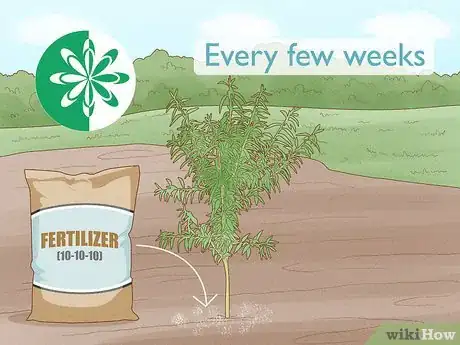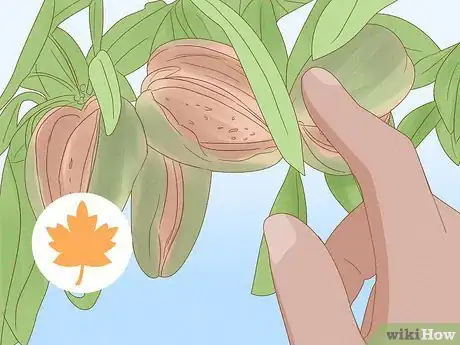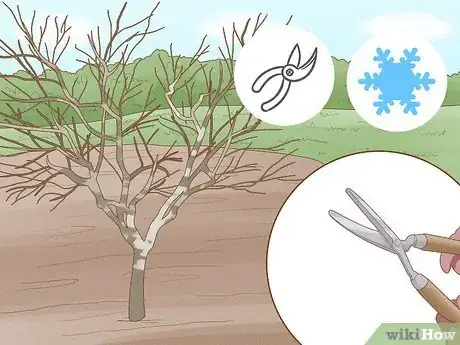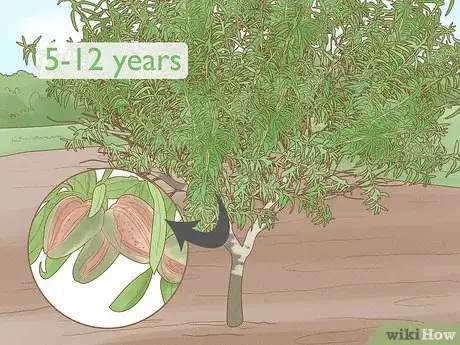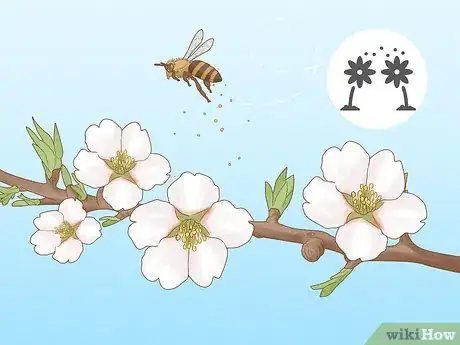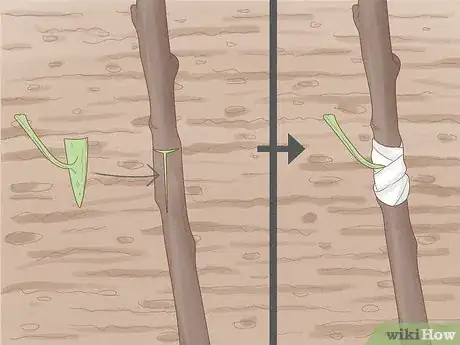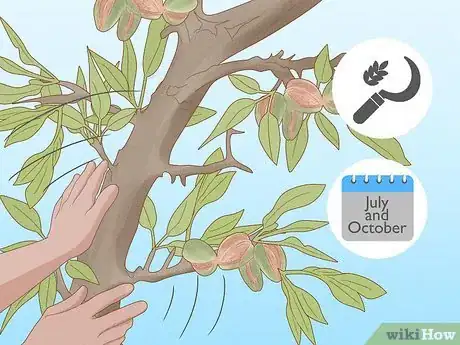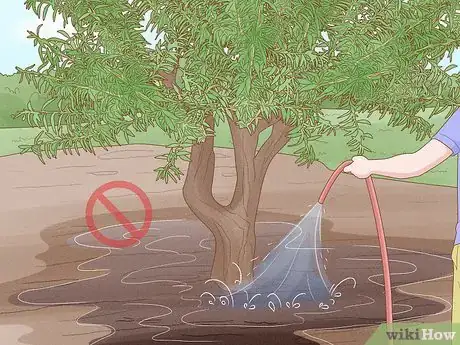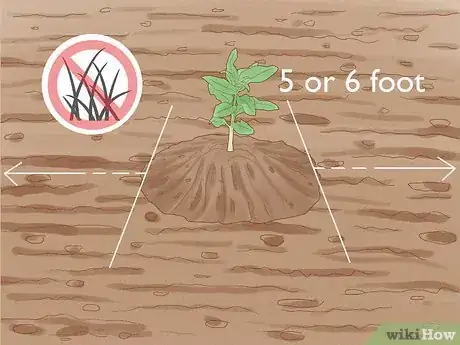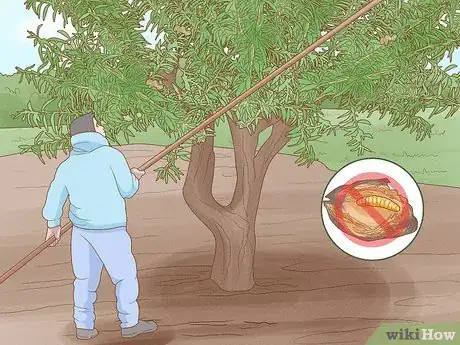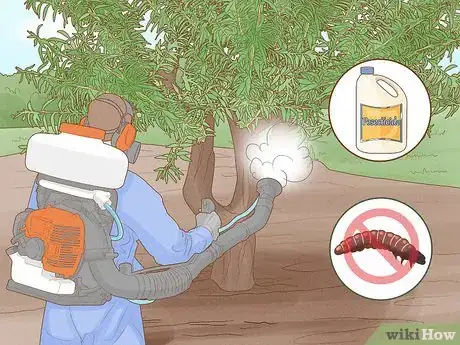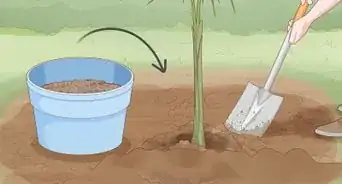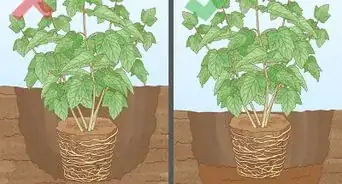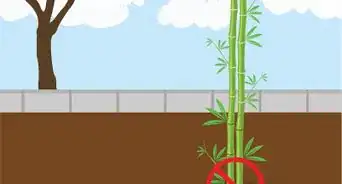This article was co-authored by Andrew Carberry, MPH. Andrew Carberry is a Food Systems Expert and the Senior Program Associate at the Wallace Centere at Winrock International in Little Rock, Arkansas. He has worked in food systems since 2008 and has experience working on farm-to-school projects, food safety programs, and working with local and state coalitions in Arkansas. He is a graduate of the College of William and Mary and holds a Masters degree in public health and nutrition from the University of Tennessee.
There are 10 references cited in this article, which can be found at the bottom of the page.
wikiHow marks an article as reader-approved once it receives enough positive feedback. This article received 18 testimonials and 87% of readers who voted found it helpful, earning it our reader-approved status.
This article has been viewed 612,482 times.
Delicious, nutritious almonds come from the fruit of the almond tree, which is native to the Middle East and South Asia and a relative to peach, apricot, and other stone fruit trees. Almonds can be finicky plants to grow; without a suitable climate or proper care techniques, almond trees may struggle to survive, let alone bear fruit.
Steps
Planting an Almond Tree
-
1Make sure your area has proper almond growing conditions. Almond trees, which are native to the hot and arid climate of the Middle East and South Asia, do best with hot summers and mild winters and do not adapt to other conditions especially well. Almonds do not usually grow at all in colder climates.[1] Unless you have a large, carefully-controlled indoor growing setup, you may have a hard time growing almonds outside of areas with a Mediterranean or Middle Eastern climate profile.
- If you're in the US, a good way of determining whether your local climate is suitable for growing almonds is to use a USDA Plant Hardiness Zone Map.[2] These maps rate geographical areas by their minimum temperatures, giving an approximate indication of the types of plants that can survive there. For almonds, you'll want your area to have a rating of at least "6" — higher is better.
- According to this system, suitable areas in the US include much of central and southern California as well as parts of Arizona, Texas, and inland Florida.
-
2Purchase seeds or seedlings. You have two options for starting your almond tree — you can either use seeds (fresh, unprocessed nuts) or seedlings (young trees).[3] Nuts allow you to experience the growing process from the very beginning, but can be more time and effort-intensive. On the other hand, seedlings are more convenient, but can be a little more expensive.
- If you want to harvest edible almonds, you'll want to be sure to pick seeds or seedlings for a fruit-bearing sweet almond tree. Keep in mind that bitter almonds are inedible and that not all sweet almond trees bear fruit. These varieties are only suitable for shade and decoration. Talk to the staff at your local garden supply store if you're unsure of which almond trees are productive.
Advertisement -
3Choose a sunny location for the tree. Almond trees do well with lots of sun. Before you get started, find a spot in your yard or garden that gets plenty of full, direct sun, free from shade. You will grow the almond tree in a pot prior to planting it in the ground, but it's still important to choose a location ahead of time — the tree will only fit in the pot for so long.
- You'll also want to make sure your growing spot has well-draining soil. Almond trees don't do well if water is allowed to pool around their roots — this can lead to root rot.
-
4Germinate the seeds. If you're growing your almond tree from a seed (which are just almond nuts surrounded by their protective husks), start by germinating the seed in a controlled environment — once it's started, you can plant it in a pot or in the ground. First, gather your seeds in a single large bowl (the more you use, the better — some may not sprout or may succumb to mold). Then, germinate them according to the following steps:
- Add water and let the seeds soak overnight.
- The next day, use a nutcracker to crack the almond shells open slightly — the shell should still hold itself together, but you should just be able to see the nut inside. Throw away any seeds that show signs of mold.
- Fill a few small flowerpots with potting soil. Make sure the pots have holes on the bottom for drainage.
- Plant the seeds an inch or two under the surface of the soil with the cracks pointing upward. Rest the flowerpot indoors in an area that will receive direct sunlight. Now, just wait for seedlings to sprout.
-
5Transplant the sprouts. Once your seedlings have started to grow (or, alternatively, if you bought ready-to-plant seedlings), prepare your decided-upon spot in the ground for planting. Make a small mound an inch or two tall (and slightly wider than it is tall) for each seedling. Push the seedling about an inch into the center of the mound until it's below the surface of the soil. This mound technique helps prevent water from gathering around the roots of the plant as it grows, which can cause serious problems (including root rot).
- If you're planting germinated seedlings, plant them at the end of winter or in the spring. Alternatively, if you're planting un-germinated seeds, plant them in late fall so that they have a chance to sprout in the spring at the very start of the bloom season.[4]
- If planting multiple trees, space each tree at least about 20 feet (6.1 m) apart. This gives the trees' roots plenty of space and allows for easy, effective irrigation.[5]
Caring for an Almond Tree
-
1Water generously. Immediately after planting, almond trees should be "tanked" (watered heavily) with at least a gallon of water to thoroughly hydrate the soil.[6] After this initial watering, you'll want to maintain a regular watering schedule as the tree grows. Almond trees thrive in hot climates, but they're not desert plants, so watering is vital to keep the growing plant healthy.[7]
- Water each almond plant at least once a week unless it rains. Established trees can survive on two or three inches of water without rain, but growing plants will usually require more.[8]
- Alternatively, you may want to use a drip irrigation system. This is an especially convenient choice if you have many trees.
-
2Fertilize in the spring. Once the growing season begins, it's appropriate to use a reasonable amount of fertilizer to boost your plant's growth (though this is not required). For young trees, you'll want to use small doses of Nitrogen every few weeks throughout the growing season. For mature trees, on the other hand, you'll want to use about two pounds of urea or 30 pounds of manure (applied once).
- No matter what kind of fertilizer you're using, be sure to "water it in" after you apply it. Fertilizer can have a harmful "burning" effect on the plant if it's applied without water or an excessive amount is used at once.[9]
-
3Harvest nuts in the fall. Fruit-bearing almond trees will start to grow small green fruits during the growing season — these hard, sour fruits aren't a common dish in the Western world, but are semi-popular in the Middle East. In the fall, these fruits will harden, turn brown, and crack open. Once the exposed almond husks have a dry, brown exterior, they're ready for harvesting. See below for more information on harvesting.
- There are two types of almond tree: trees that grow "sweet" almonds and trees that grow "bitter" almonds. Bitter almonds and their fruit aren't safe for eating. Bitter almonds contain prussic acid, a toxin. Just a handful of raw, unprocessed bitter almonds can potentially be deadly.[10] However, it is possible to process bitter almonds with a special toxin-leaching process, rendering them edible.
-
4Prune in early winter. Winter is the perfect time for pruning — the tree's dormant wood makes for safe, easy removal. Note, however, that dead or diseased limbs should be removed immediately at any time of the year. To prune branches, use a pair of garden clippers to make a clean cut near the bottom of the branch. For tougher pruning jobs, use a saw.
- Pruning a tree encourages healthy, even, visually appealing growth. Smart pruning choices can also make a tree stronger, sturdier, and more resistant to certain diseases.[11]
- When pruning, try to thin out especially dense areas of foliage and eliminate spots where two branches rub against one another. You'll also want to prune any stray branches that grow higher or further to the side than the others to encourage even growth.[12]
Getting Your Tree to Bear Fruit
-
1Wait 5 years before expecting fruit. Almond trees take some time to start producing nuts. Typically, this "waiting" period lasts about five years. However, depending on the species of tree, it can take as long as 12 years for it to reach full nut-producing capacity. Be patient — a mature, healthy tree can produce over 40 pounds of nuts in a single harvest!
- Once an almond tree begins bearing fruit, it will do so every year for as long as 50 years, ensuring plenty of almonds for years to come.
-
2Be sure the tree is pollinated. It's important to understand that most almond trees don't produce almonds "by default". The fruit of the almond tree (and, thus, the almonds themselves) are usually produced as a response to pollination as a method of sexual reproduction. This means that unless you have a self-pollinating variety of almond tree, you'll need to cross-pollinate your tree with another tree of a different variety to get almonds.
- The easiest way to do this is usually just to have multiple trees of different varieties. Once you have two to three trees growing near each other, pollinators like bees will bring pollen from one tree to another as part of their natural behavior.
- You can also pollinate trees manually by taking a flower-bearing branch from another tree and rubbing it against the first tree's flowers, mixing the tree's pollen in the process. However, this is much more time-intensive and may not work as well as natural pollination.
-
3Graft a different variety onto the tree as an alternative. Grafting will turn an unproductive tree into a productive one if the existing tree is not self-fertile and you graft on a scion from a different variety. Once the graft "sets", the grafted-on part will still have the ability to produce fruit, even if the rest of the tree doesn't. This is how the vast majority of certain crops, such as oranges, are grown.
- There are several ways to graft a productive limb onto your tree. The simplest is usually a technique called T-budding that involves making a long, narrow cut on the "host" tree and slipping the new limb into the groove formed. After this, the new limb is secured with string or rubber ties until the host tree accepts it.
- Note that most grafting is performed in the spring when the material under the bark is moist and green.
- Keep in mind that grafting will not make an unproductive tree productive if it isn't producing due to poor site selection, lack of nutrients, etc.
-
4Harvest the almonds when ripe. Almonds are usually harvested between July and October (in some countries like Saudi Arabia, it starts end of May) once the external fruit has dried and cracked open. Shake the tree and gather the almonds that drop, taking care to throw out any rotten ones you come across. Sometimes, the fruit may fall without the tree being shaken. Unless they begin to rot, these nuts are still edible.
- After harvesting, it's a good idea to freeze your almond husks for 1-2 weeks to kill any residual pests.[13]
Treating Common Problems
-
1Avoid over-watering to prevent root rot. One problem that can affect nearly any tree (including the almond tree) is root rot. This harmful condition is caused mainly by fungi that start to grow on the tree's roots if they're in contact with water for too long. Since root rot can be very tough to treat, the best policy is prevention. Never over-water your tree — any sort of watering that results in standing water around the base of the tree can do much more harm than good.
- To help prevent over-watering, you may want to increase the drainage capability of your soil. This can be done by mixing in plenty of extra hummus or organic matter to give it added permeability. Note that shallow, heavy, and clay-rich soils have especially bad drainage.
- If you have a case of root rot on your hands (usually signified by drought-like symptoms, including yellowing, wilting, and dying leaves), dig up the plant's roots and cut away any dark, slimy patches. If problems persist, dispose of the plant to prevent the fungus from spreading throughout your garden.
-
2Practice good weed control. Weeds are not a huge concern for old, established almond trees, but they can be a serious threat to young seedlings. Weeds compete fiercely for the same nutrients, water, and sun as young almond trees. If ignored, weeds can even "strangle" a seedling before it has a chance to grow.
- The best policy for weeds, especially during your plant's first few months, is to start weeding early and often. Try to keep a five or six foot strip along each row of seedlings free of weeds — you can use manual methods (like your hands or garden tools) or herbicides to kill the weeds.
- You can use a layer of mulch, or landscaping fabric to control weeds. This works well for small, home orchards.
-
3Keep the tree free of mummies to fight navel orangeworm. One particularly annoying almond pest is the navel orangeworm. Over the winter, this insect shelters in so-called "mummy" nuts — almonds that aren't harvested and are left on the tree into the late fall and winter. Once the spring rolls around, these grubs become active, resulting in damage to the almond crop. The best way to prevent this is simply to get rid of the mummies. Without any place to shelter over the winter, orangeworms should not appear, as they cannot penetrate healthy fruits later in the year.
- After the mummies are removed from the tree, be sure to destroy them by mowing. Orangeworms can still shelter in intact mummies on the ground.
-
4Use Bacillus thuringiensis spray for peach twig borers. Peach twig borers are just what they sound like — small, grub-like insects that bore into stone fruits like peach and almonds. These insects can cause significant damage to almond crops with their feeding, so if you see these pesky bugs (or chewed-up leaves, which can signal their presence), use a pesticide immediately to protect your crop. Bacillus thuringiensis, a bacterial insecticide, is a great choice for killing borers. Time the spray with the spring hatching season to kill the insects before they have a chance to do significant damage.[14] [15]
- In addition to the two examples above, a huge variety of additional pests can potentially attack almond trees — so many, in fact, that it's impossible to list them all here. For more information, use a search engine query for "almond pests" or contact your local garden supply store or a local university's botany department.
- You may also want to learn about integrated pest management. This is a method of controlling pests that combines biological, environmental, and chemical pest management techniques. It is more effective than using one method alone.[16]
Expert Q&A
Did you know you can get expert answers for this article?
Unlock expert answers by supporting wikiHow
-
QuestionHow do I transplant a year old tree?
 Andrew Carberry, MPHAndrew Carberry is a Food Systems Expert and the Senior Program Associate at the Wallace Centere at Winrock International in Little Rock, Arkansas. He has worked in food systems since 2008 and has experience working on farm-to-school projects, food safety programs, and working with local and state coalitions in Arkansas. He is a graduate of the College of William and Mary and holds a Masters degree in public health and nutrition from the University of Tennessee.
Andrew Carberry, MPHAndrew Carberry is a Food Systems Expert and the Senior Program Associate at the Wallace Centere at Winrock International in Little Rock, Arkansas. He has worked in food systems since 2008 and has experience working on farm-to-school projects, food safety programs, and working with local and state coalitions in Arkansas. He is a graduate of the College of William and Mary and holds a Masters degree in public health and nutrition from the University of Tennessee.
Food Systems Expert
-
QuestionAre the offspring of nuts from a sweet cultivar variety always that "safe" eating variety or can they revert to the wild type?
 Andrew Carberry, MPHAndrew Carberry is a Food Systems Expert and the Senior Program Associate at the Wallace Centere at Winrock International in Little Rock, Arkansas. He has worked in food systems since 2008 and has experience working on farm-to-school projects, food safety programs, and working with local and state coalitions in Arkansas. He is a graduate of the College of William and Mary and holds a Masters degree in public health and nutrition from the University of Tennessee.
Andrew Carberry, MPHAndrew Carberry is a Food Systems Expert and the Senior Program Associate at the Wallace Centere at Winrock International in Little Rock, Arkansas. He has worked in food systems since 2008 and has experience working on farm-to-school projects, food safety programs, and working with local and state coalitions in Arkansas. He is a graduate of the College of William and Mary and holds a Masters degree in public health and nutrition from the University of Tennessee.
Food Systems Expert
-
QuestionCan California almond trees be farmed in India? What are the best weather conditions for the trees?
 Community AnswerThe best conditions are in India, because it is a tropical country and has a lot of rainfall and a long summer, which is perfect for almonds. But no, California almond trees cannot be farmed in India because of the difference in temperatures.
Community AnswerThe best conditions are in India, because it is a tropical country and has a lot of rainfall and a long summer, which is perfect for almonds. But no, California almond trees cannot be farmed in India because of the difference in temperatures.
Warnings
- Do not over water your almond tree. Almond plants are prone to rotting and mold.⧼thumbs_response⧽
References
- ↑ http://www.gardeningblog.net/how-to-grow/almonds/
- ↑ http://planthardiness.ars.usda.gov/PHZMWeb/
- ↑ http://www.gardeningblog.net/how-to-grow/almonds/
- ↑ http://www.gardeningblog.net/how-to-grow/almonds/
- ↑ http://www.gardeningknowhow.com/edible/fruits/almonds/growing-almond-nut-trees.htm
- ↑ http://thealmonddoctor.com/2010/12/27/proper-almond-tree-planting/
- ↑ http://www.gardeningblog.net/how-to-grow/almonds/
- ↑ http://www.gardeningknowhow.com/edible/fruits/almonds/growing-almond-nut-trees.htm
- ↑ http://www.aos.org/Default.aspx?id=125
- ↑ http://www.todayifoundout.com/index.php/2010/04/almonds-are-not-nuts/
- ↑ http://www.wcfb.sailorsite.net/WCFB/Pruning.html
- ↑ http://www.wcfb.sailorsite.net/WCFB/Pruning.html
- ↑ http://www.gardeningknowhow.com/edible/fruits/almonds/growing-almond-nut-trees.htm
- ↑ https://extension.usu.edu/files/publications/factsheet/peach-twig-borers07.pdf
- ↑ http://www.ipm.ucdavis.edu/PMG/C003/m003bcpeachtwg02.html
- ↑ http://www2.ipm.ucanr.edu/WhatIsIPM/
About This Article
To grow almonds, plant almond seeds or seedlings somewhere that has hot, arid summers and mild winters. Choose a spot that gets a lot of direct sunlight and thoroughly water your almond tree once a week so it doesn't dry out. Also, fertilize your almond tree in the spring so it grows healthy and strong during the summer. Wait about 5 years for your tree to start producing almonds and then harvest them by shaking your tree until they fall. To learn more from our Food Systems Expert co-author, like how to germinate your seeds before planting them outdoors, keep reading!
